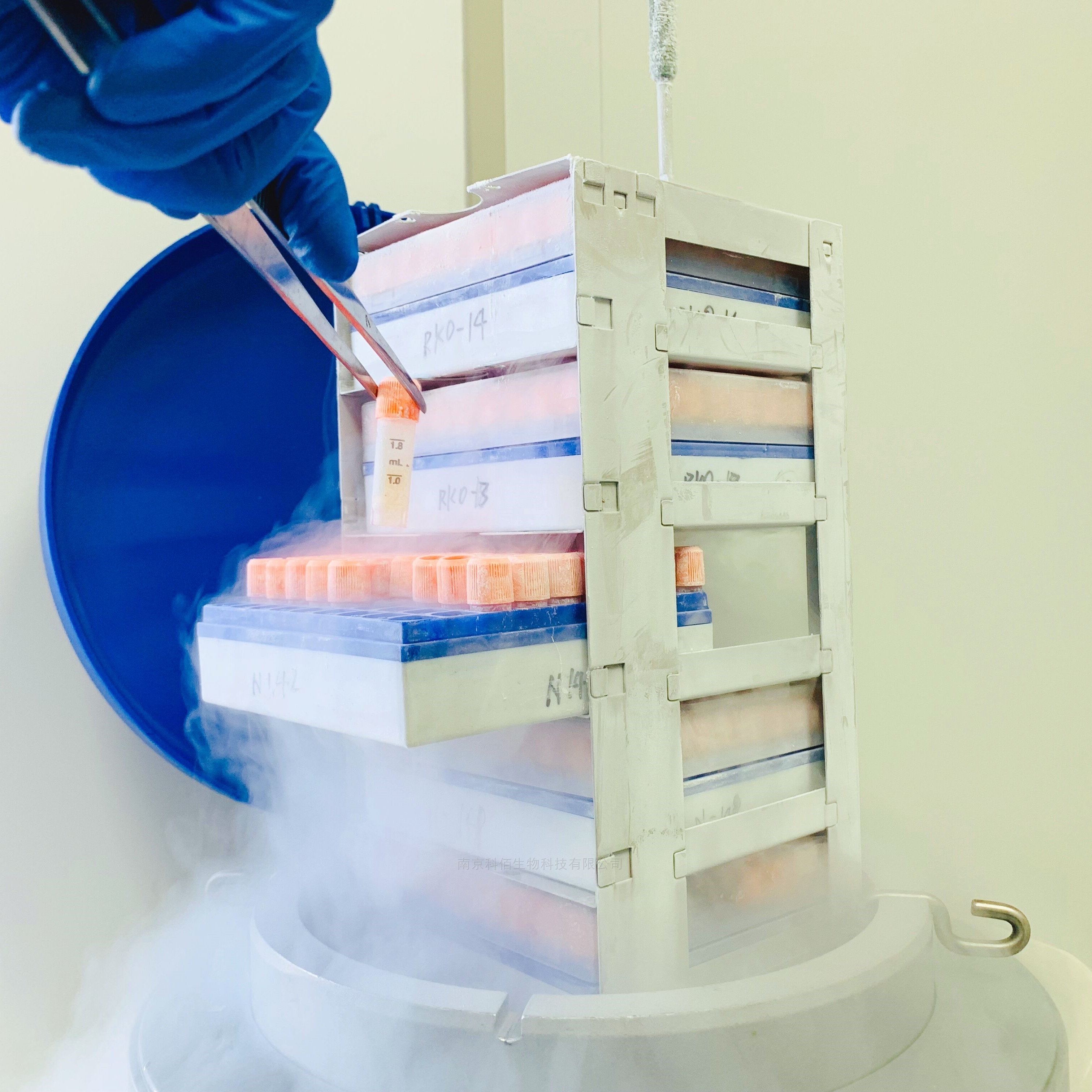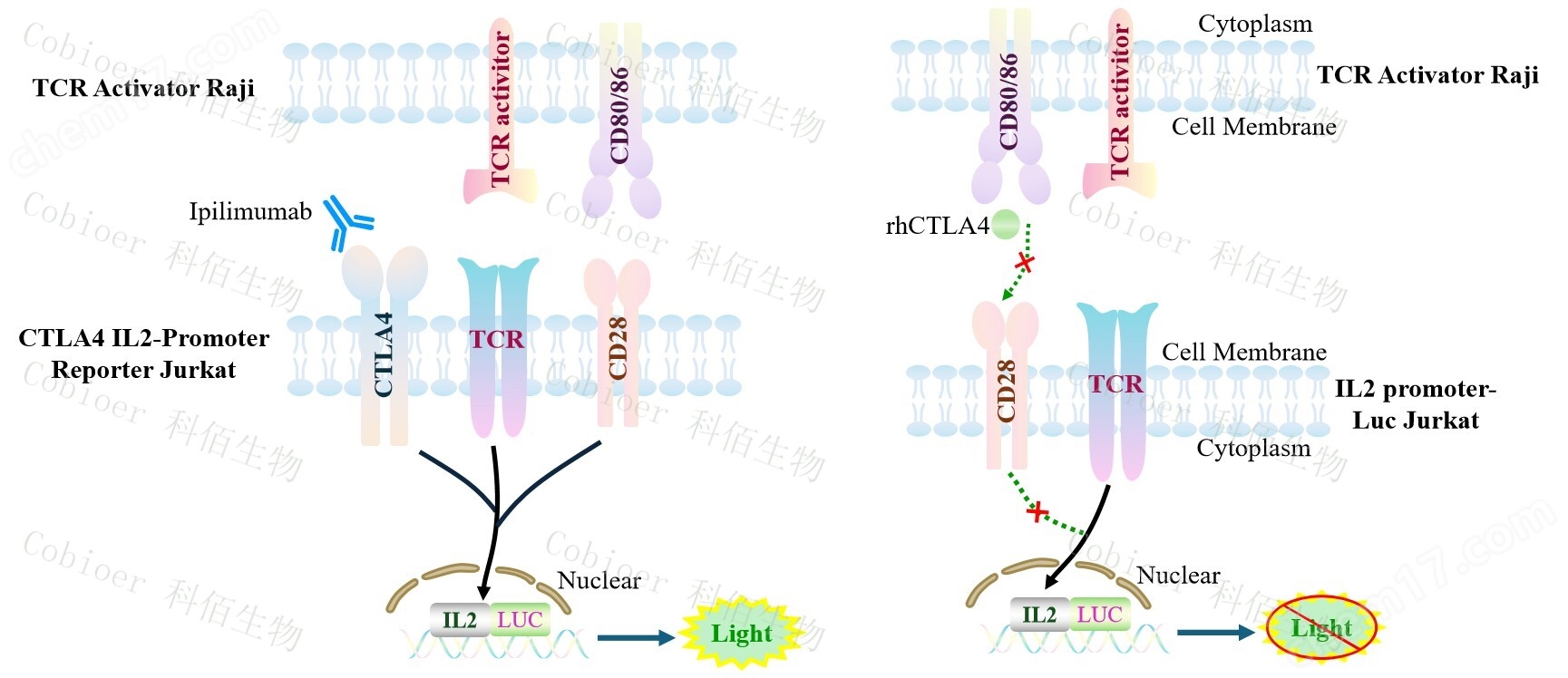| 名称 | TCR Activator/Raji |
| 型号 | CBP74015 |
| 报价 |  |
| 特点 | TCR Activator/Raji,冻存条件:90% FBS+10% DMSO; |
产品搜索
相关文章
联系我们
联系人:蒋经理
电话:4008750250
号码:
手机:18066071954
地址:南京市栖霞区纬地路9号
Email: zhangxiangwen@cobioer.com
电话:4008750250
号码:
手机:18066071954
地址:南京市栖霞区纬地路9号
Email: zhangxiangwen@cobioer.com
产品展示 / PRODUCTS

- 详细内容
| I. Background | |
| T 细胞在细胞介导的免疫中发挥核心作用,可以介导长期、抗原特异性、效应和记忆 反应。T 细胞是许多免疫疗法的靶标,包括检查点抑制剂、双特异性 T 细胞接合器和免疫 激动剂。此外,T 细胞本身已被研究为血液系统恶性肿瘤中使用嵌合抗原受体添加或自体 过继转移的疗法。近年来,各种旨在诱导、增强和/或工程化 T 细胞反应的治疗策略已 成为治疗癌症和自身免疫等疾病的有希望的方法。 T 细胞受体(T cell receptor,TCR)是 T 细胞特异性识别和结合抗原肽-MHC 分子的分 子结构, 其介导的 T 细胞活化在胸腺 T 细胞发育,T 细胞亚群分化以及效应 T 细胞功能发 挥过程中均起着至关重要的作用。TCR 能特异性识别抗原提呈细胞表面 MHC 提呈的抗原 肽(peptide),并将胞外识别转化为可向细胞内部传递的信号,通过诱导 TCR 邻近 激酶活化,促进信号传递复合物组装,活化下游 MAPK、PKC 以及钙离子等信号途径,最 终活化相应的转录因子,调控效应蛋白分子的表达,完成 T 细胞的活化。 | |
| II. Description | |
TCR Activator Raji 报告基因药靶模型很好的模拟了体内 CD28&CD80/CD86 或者CTLA4 的信号转导过程,原理见下图所示。 Figure 1. TCR Activator Raji 细胞模型原理图 | |
| III. Introduction | |
| Host Cell: | RAJI |
| Expressed gene: | TCR Activator |
| Stability: | 32 passages (in-house test, that not means the cell line will be instable beyond the passages we tested.) |
| Freeze Medium: | 90% FBS+10% DMSO |
| Culture Medium: | RPMI-1640+10%FBS+1μg/ml Puromycin |
| Mycoplasma Testing: | Negative |
| Storage: | Liquid nitrogen |
| Application(s): | Functional(Report Gene) Assay |
| IV. Description of Host Cell Line | |
| Organism: | Homo sapiens,human |
| Tissue: | Lymphoblast |
| Disease: | Burkitt's lymphoma |
| Morphology: | Lymphoblast |
| Growth Properties: | Suspension |
| Ⅴ. Representative Data | |

Figure 2. Response of NFAT-Luc Jurkat.(C7C1) to Activitor(C1).

Figure 3. Response of IL2 promoter-Luc Jurkat (C29) to TCR Activator Raji (C1).

Figure 4. Dose Response of Recombinant Human CTLA-4 Protein-Fc in IL2 Promoter Reporter-Jurkat (C29)with TCR Activitor Raji (C1).

Figure 5. Dose Response of lpilimumab in CTLA4 IL-2 Promoter Reporter-Jurkat (C39)with TCR Activitor Raji (C1).



